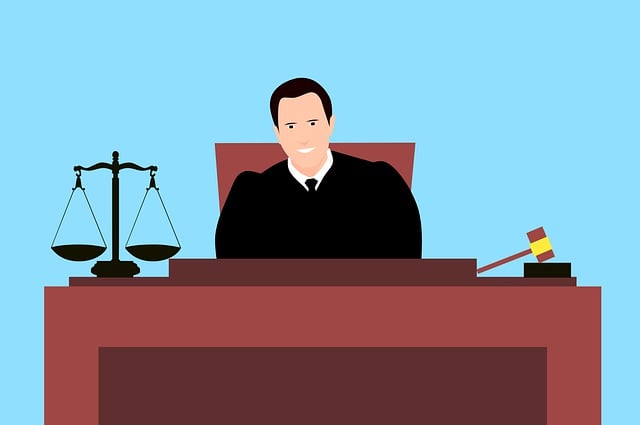Regulatory fraud laws are vital for fair market practices, penalizing misleading activities like copyright infringement. Businesses face risks of legal consequences and reputation damage from unauthorized content reproduction, counterfeit goods creation, or illegal media streaming. To avoid these pitfalls, companies must embrace stringent best practices, including creating original content, securing licenses, documenting sources, and implementing transparent internal policies. Real-world case studies highlight the severe consequences of copyright infringement and ethical conduct failures, underscoring the importance of compliance to foster successful defenses against legal challenges.
In today’s complex business landscape, understanding and adhering to regulatory fraud laws is paramount. This article guides you through the intricacies of these laws, focusing on copyright infringement—a common pitfall for many companies. We’ll explore various types of copyright infringement in business settings, delve into best practices for avoiding legal traps, and present compelling case studies that offer valuable lessons from real-world scenarios. By the end, you’ll be equipped with knowledge to safeguard your business from copyright infringement risks and ensure compliance.
- Understanding Regulatory Fraud Laws: An Overview
- Common Types of Copyright Infringement in Business
- Strategies to Avoid Legal Pitfalls: Best Practices
- Case Studies: Lessons from Real-World Scenarios
Understanding Regulatory Fraud Laws: An Overview

Regulatory fraud laws are designed to protect businesses and consumers alike by ensuring fair and transparent practices. These laws target individuals and entities that deliberately mislead or deceive in order to gain an unfair advantage, whether it’s through misleading advertising, false reporting, or manipulation of market data. Understanding these regulations is crucial for avoiding copyright infringement in business, as many fraud schemes involve the unauthorized use of another company’s intellectual property.
In high-stakes cases across the country, regulatory fraud can lead to significant penalties, including hefty fines and jail time for those convicted. Jury trials play a pivotal role in these cases, as they often require detailed examination of financial records, legal documents, and expert testimony. Businesses must stay vigilant and educate themselves about the latest legislative changes to ensure compliance and mitigate potential risks.
Common Types of Copyright Infringement in Business

Copyright infringement is a significant concern for businesses operating in today’s digital landscape. From unauthorized use of copyrighted materials to creating derivative works without permission, various forms of this misconduct can lead to severe legal repercussions and damage a company’s reputation. Understanding common types of copyright infringement is crucial for any business aiming to avoid such pitfalls.
One prevalent issue is the unauthorized reproduction of copyrighted content, including text, images, or software. This occurs when businesses replicate protected materials without obtaining the necessary licenses, which can be acquired through fair use exceptions or direct permission from the copyright holder. Another form involves the creation and distribution of counterfeit goods, where businesses produce and sell replica products under the guise of genuine brands, misleading consumers and infringing on intellectual property rights. Additionally, unauthorized streaming or downloading of copyrighted media, often facilitated by peer-to-peer networks, is a growing concern, especially across the country, as it not only infringes upon creators’ rights but also hinders their ability to achieve extraordinary results.
Strategies to Avoid Legal Pitfalls: Best Practices

To avoid legal pitfalls when navigating regulatory fraud laws, businesses must adopt robust best practices. One critical area to focus on is avoiding copyright infringement, which can lead to severe consequences and even indictments. Ensuring that all content, including marketing materials, financial reports, and product descriptions, are original or properly licensed is paramount. This involves obtaining written permission from copyright holders before using any copyrighted material and crediting sources accurately to prevent disputes.
Additionally, maintaining meticulous records and documentation is essential for a winning challenging defense verdict. Businesses should implement transparent internal policies and procedures that promote ethical conduct and compliance with regulatory standards. Regular training sessions for employees can help foster a culture of integrity where everyone understands their role in avoiding fraud. By adhering to these best practices, respective businesses can significantly reduce the risk of legal issues and ensure long-term sustainability.
Case Studies: Lessons from Real-World Scenarios

In navigating regulatory fraud laws, case studies from real-world scenarios offer invaluable lessons for businesses striving to avoid copyright infringement. One prominent example involves a tech company that, in its rush to launch a new product, copied significant portions of code from an open-source platform. This resulted not only in legal repercussions but also damaged the company’s reputation and led to substantial financial penalties. The case underscores the importance of understanding intellectual property rights and seeking proper licensing for any reused code.
Another compelling instance involves a pharmaceutical firm that misrepresented clinical trial data, leading to a successful lawsuit and severe regulatory sanctions. This scenario highlights the need for transparency and accuracy in business practices, especially when dealing with life-critical products. For respective businesses across the country, these lessons are crucial in fostering ethical conduct and winning challenging defense verdicts while ensuring compliance with evolving legal standards.
Regulatory fraud laws are crucial in fostering a fair and transparent business environment. By understanding these laws, businesses can effectively navigate copyright infringement issues and avoid legal pitfalls. The strategies outlined in this article, backed by real-world case studies, serve as valuable best practices for safeguarding against such infractions. Remember that proactive measures to prevent copyright violations can protect your business from significant legal consequences and maintain a strong reputation in today’s digital era. Ultimately, staying informed and compliant is key to thriving in a competitive market while avoiding costly mistakes in avoiding copyright infringement in business.






